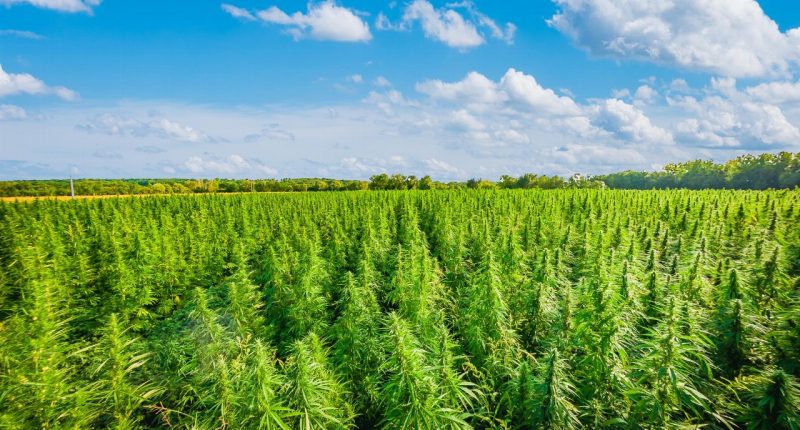The Australian legalisation of medical cannabis in 2016 launched a flood of new companies to the ASX.
While the sector is relatively young, a growing patient base and the possibility of recreational legalisation are proving to be full of opportunities for investors.
However, the ASX cannabis sector has, in general, not fared so well in 2022, with steep year-to-date losses recorded by even some of the most promising companies in the space.
While cannabis companies have not managed to escape the general macroeconomic turmoil that has plagued the market in recent years, a slowing pace of legalisation across the world and the unpredictable nature of cannabis demand are also to blame for the industry’s poor performance.
With that being said, FreshLeaf Analytics estimated medicinal cannabis sales in Australia to be worth approximately $423 million in 2022 compared to $230 million in 2011.
Though stocks may seem incredibly volatile, many investors see tremendous opportunities in the industry.
And some Australian companies are working hard to capitalise on the growth potential of the cannabis industry.
Companies to watch out for
Incannex Healthcare (ASX:IHL)
First listed in 2016, medicinal cannabis and psychedelic clinical development company Incannex has grown to a market cap of $262 million and listed on the Nasdaq in February under ticker code IXHL.
Since then, the company has been busy with its pipeline of novel synthetic cannabinoid and psychedelic agents.
Incannex completed an acquisition of APIRx Pharmaceuticals in August, adding to its pipeline a diverse portfolio of promising therapeutic candidates targeted at treating an extensive range of conditions, including pain, dementia, Parkinson’s Disease, and ophthalmic conditions.
Though the company is ending 2022 in the red, a December shares placement raised $13 million to give IHL a cash position of approximately $45 million, helping to ensure its programs will be fully funded into 2025.
Little Green Pharma (ASX:LGP)
The Perth-based company is the first in Australia to grow medicinal cannabis for domestic use.
With a modest market cap of $47 million, the founder-led company grew its number of new domestic patients to roughly 12,800 over the 2022 financial year — 21 per cent more than in FY21.
Despite being relatively new to the ASX, the company has been busy building up its presence in Australia and in Europe this year.
In fact, local demand has been so strong that LGP has had to import cannabis from its own facility in Denmark, at which it secured its registration by the Danish Medicines Agency for locally-produced cannabis medicine.
In 2021, the business acquired one of Europe’s largest medicinal cannabis cultivation and manufacturing facilities in Denmark for roughly $21 million from Canopy Growth, which resulted in imports of cannabis flower within months.
“The import of this first shipment so quickly following the acquisition is a milestone achievement by our new Denmark team,” LGP founder and CEO Fleta Solomon said in September.
“To be able to meet all the regulatory requirements to supply and import product within this timeframe is a significant achievement and consistent with our reputation as a leading global medicinal cannabis business.”
Regulatory changes – what do they mean?
Over the last few years, the significant increase in the supply and use of medicinal cannabis in Australia has resulted in a string of regulatory reforms set to benefit both growers and patients.
In 2022, the Therapeutics Drug Administration (TGA) flagged a fresh round of important reforms that will come into effect from July 1, 2023.
TGO 93 is a standard that specifies minimum quality requirements for all medicinal cannabis products.
Among the most significant changes to cannabis regulatory standards is the “release for supply” (RFS) clause, which applies to the final step of manufacture.
For medicinal cannabis products, RFS must be performed at either a TGA-licensed site in Australia or at an overseas site that has approvals that comply with TGO 93 from the effective date.
While the updated regulations mean Australian cannabis companies need to adhere to a more meticulous and perhaps more tedious manufacturing process, looking at the bigger picture, tighter regulations are a positive step for the industry: if Australian drug regulators are confident cannabis is being produced to high standards, this will pave the way to support for wider cannabis supply across the board.
The updated TGO 93 is a step towards the widening spread of Australians who consume medical cannabis.
What does this mean for investors in 2023?
All investments carry a degree of risk, and the general consensus among industry experts is that the cannabis industry perhaps still carries a higher risk than other sectors.
However, it’s also often true that higher risks yield greater rewards: stocks like Incannex and Little Green Pharma have already made strides in the cannabis-based biopharma industry, and investors are continuing to watch the space with keen interest.








